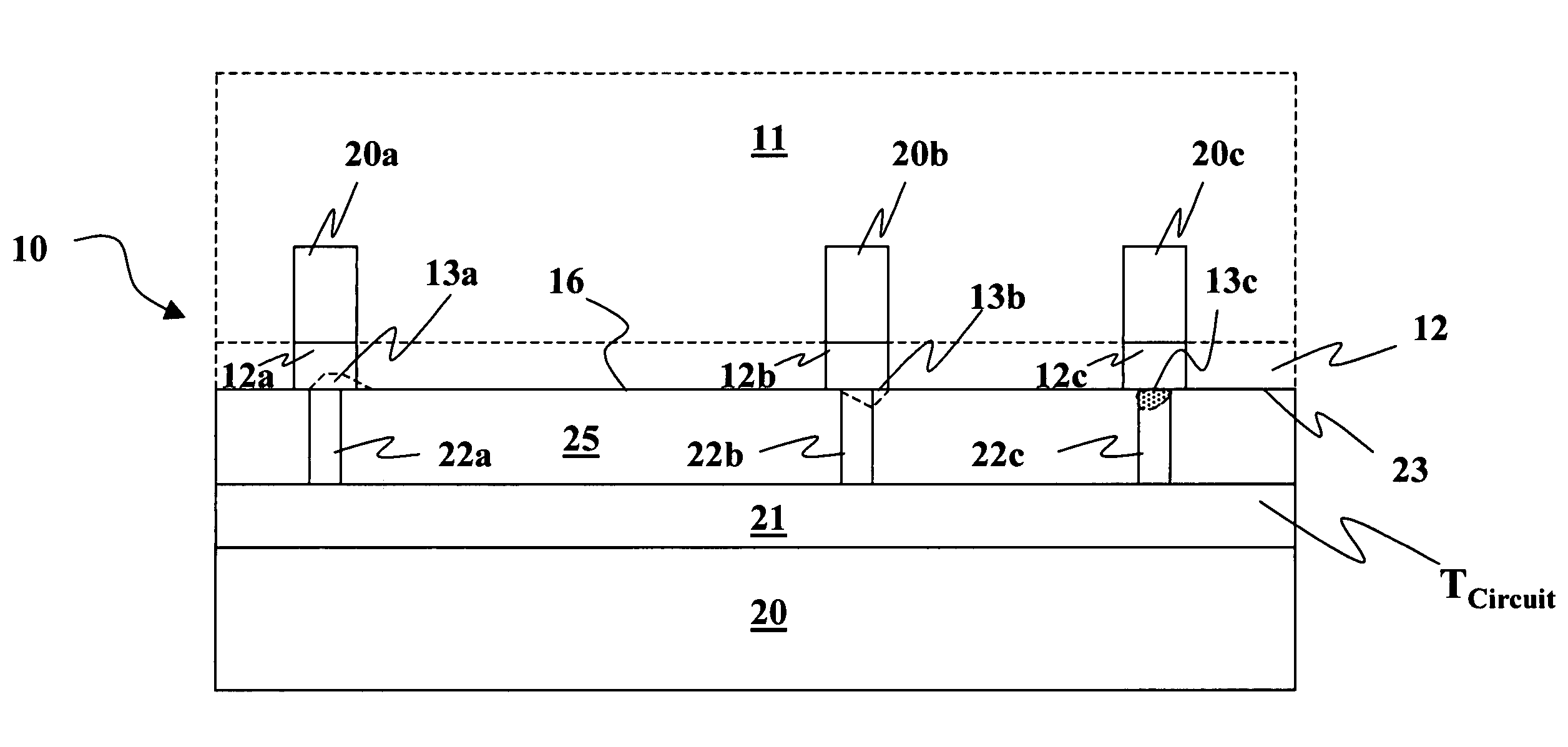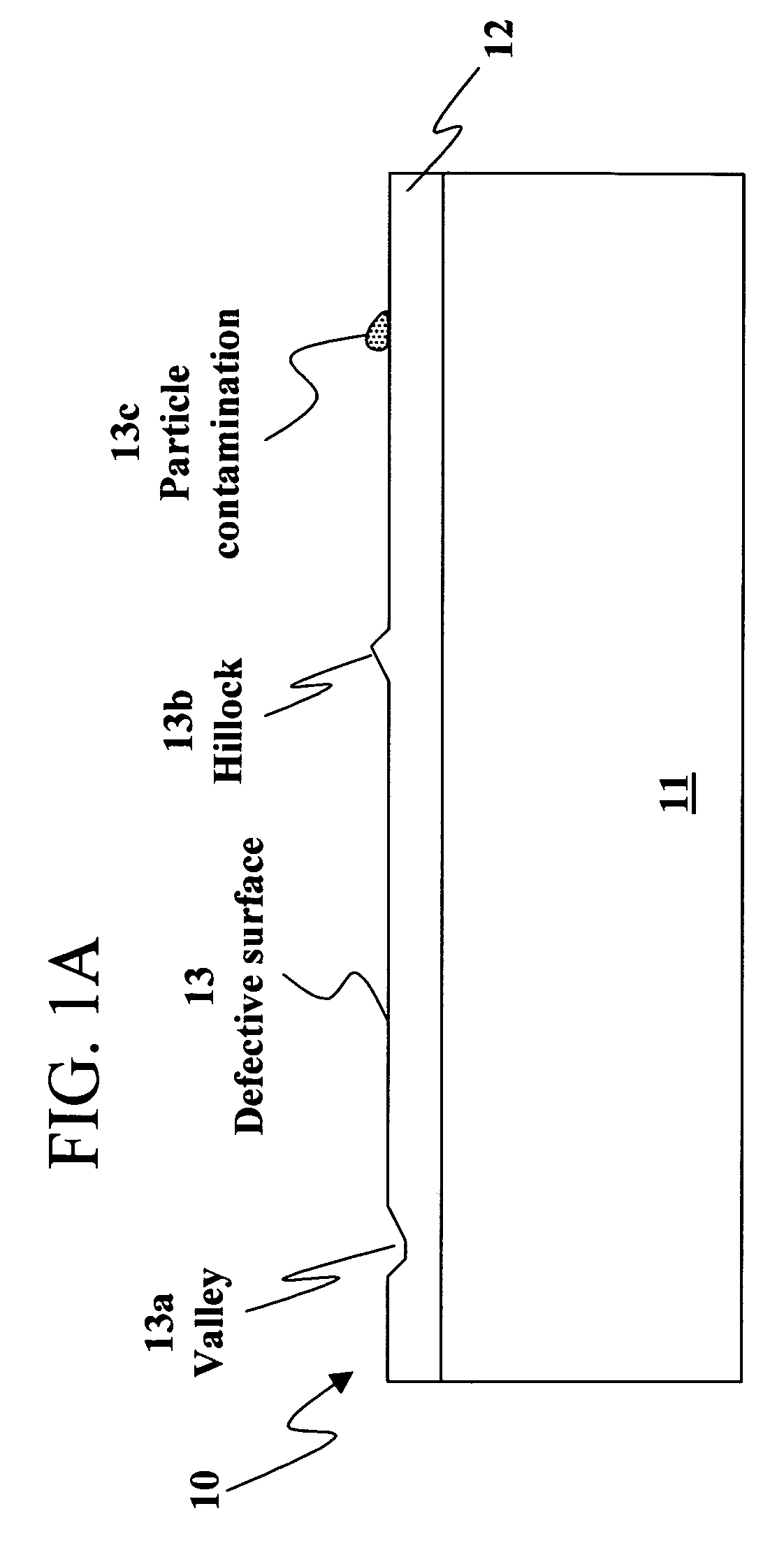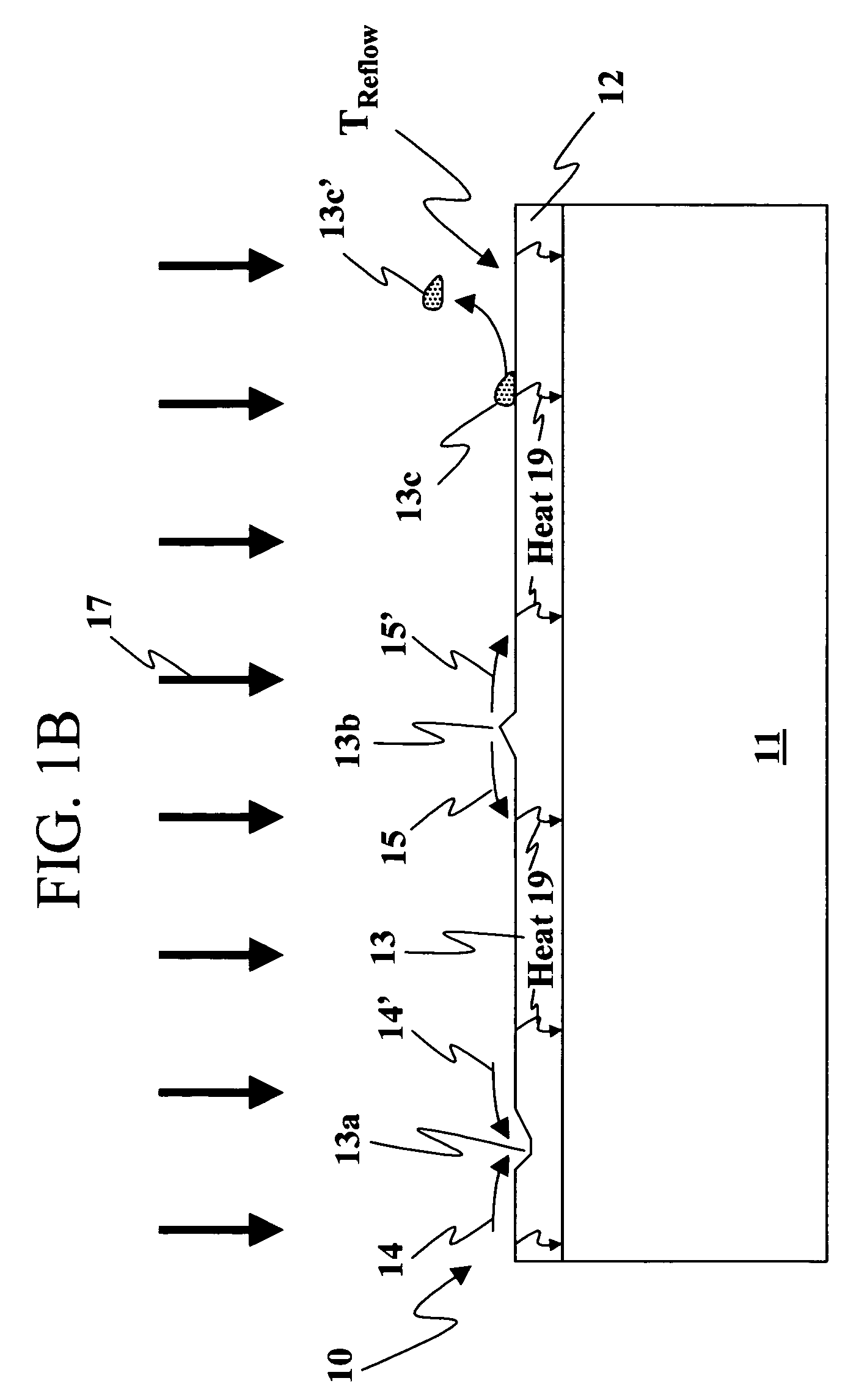Wafer bonding method
a technology of wafer bonding and silicon, applied in the direction of contact members penetrating/cutting insulation/cable strands, radiation controlled devices, transistors, etc., can solve the problem of large chip area consumed by lateral oriented devices, more complex and expensive to fabricate a computer chip with memory embedded in this way, and the masks used to fabricate memory devices are not compatible with the masks used. problem, to achieve the effect of reducing the number of defects
- Summary
- Abstract
- Description
- Claims
- Application Information
AI Technical Summary
Benefits of technology
Problems solved by technology
Method used
Image
Examples
Embodiment Construction
[0019]FIGS. 1A-1F are simplified sectional views of steps in fabricating a circuit 10 in accordance with the present invention. It should be noted that in the following figures, like reference characters indicate corresponding elements throughout the several views. Circuit 10 is formed using a wafer bonding method which has several advantages. One advantage is that the wafers can be more strongly bonded together because the method reduces the number of defects on the bonding surfaces. There are fewer defects on the bonding surfaces because one or more of the bonding surfaces is reflowed at a high reflow temperature so the number of defects is reduced. The defects can form microvoids between the bonding surfaces when the wafers are coupled together. Microvoids are regions of missing material formed between the two bonding surfaces when they are coupled together. Since the bond strength increases with the contact area between the two bonding surfaces, fewer microvoids indicate a stron...
PUM
 Login to View More
Login to View More Abstract
Description
Claims
Application Information
 Login to View More
Login to View More - R&D
- Intellectual Property
- Life Sciences
- Materials
- Tech Scout
- Unparalleled Data Quality
- Higher Quality Content
- 60% Fewer Hallucinations
Browse by: Latest US Patents, China's latest patents, Technical Efficacy Thesaurus, Application Domain, Technology Topic, Popular Technical Reports.
© 2025 PatSnap. All rights reserved.Legal|Privacy policy|Modern Slavery Act Transparency Statement|Sitemap|About US| Contact US: help@patsnap.com



